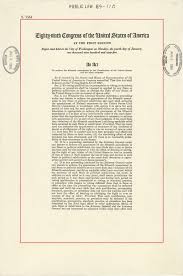The 25th Amendment: A Key to Presidential Succession

Introduction
The 25th Amendment to the United States Constitution is a pivotal piece of legislation that provides clear guidelines for presidential succession and the handling of presidential incapacity. In recent years, discussions surrounding this amendment have amplified, especially in light of health concerns and debates over presidential authority. Understanding the implications of the 25th Amendment is crucial for grasping the constitutional framework that governs the highest office in the nation.
Historical Context
Ratified in 1967, the 25th Amendment was primarily introduced in response to the assassination of President John F. Kennedy in 1963 and the subsequent concerns regarding the continuity of government. The Amendment outlines procedures for filling a vacancy in the office of the Vice President and for dealing with presidential incapacitation, ensuring that the government remains functional in times of crisis.
Key Provisions
The 25th Amendment consists of four sections:
- Section 1: If the President is removed from office, the Vice President will assume the presidency.
- Section 2: If there is a vacancy in the Vice Presidency, the President can nominate a new Vice President, who must be confirmed by a majority vote of both the House of Representatives and the Senate.
- Section 3: This section allows the President to voluntarily transfer power to the Vice President when they are unable to discharge the powers and duties of the office.
- Section 4: This section provides a mechanism for the Vice President and the Cabinet to declare the President unable to fulfill their duties, allowing for the Vice President to assume control.
Recent Applications
The 25th Amendment has come under scrutiny during recent presidential administrations, notably during discussions of Presidential health and capacity. For example, during President Donald Trump’s tenure, there were active debates over the mental and physical fitness of the President, sparking calls for a more robust use of the 25th Amendment. Additionally, some Democratic lawmakers suggested its invocation following the January 6 Capitol riots, illustrating its relevance in contemporary politics.
Conclusion
The 25th Amendment remains a crucial part of the United States Constitution, designed to ensure a stable and continuous executive branch. As political discourse evolves, and as questions surrounding presidential capability become more pronounced, the significance of the 25th Amendment is likely to endure. Its provisions not only facilitate a response to emergencies but also underscore the importance of accountability and governance in the highest office of the land. Readers must stay informed about such constitutional mechanisms as they shape the interplay between leadership and public trust in the democratic process.









